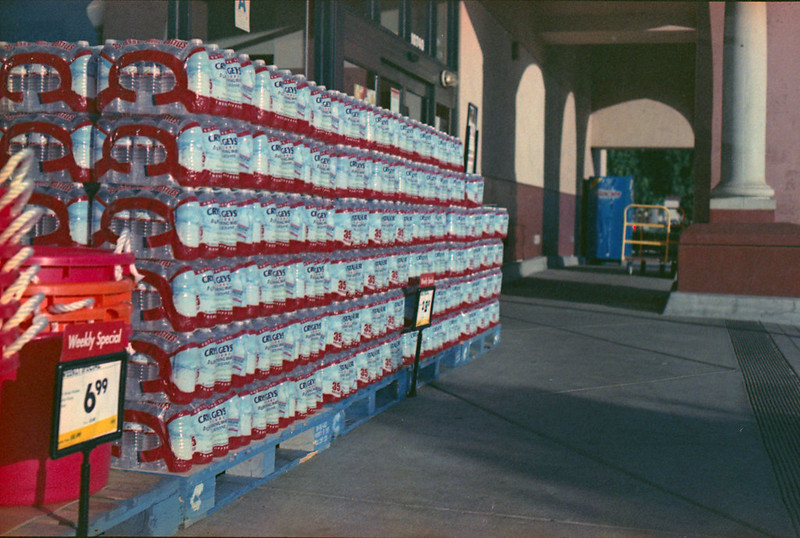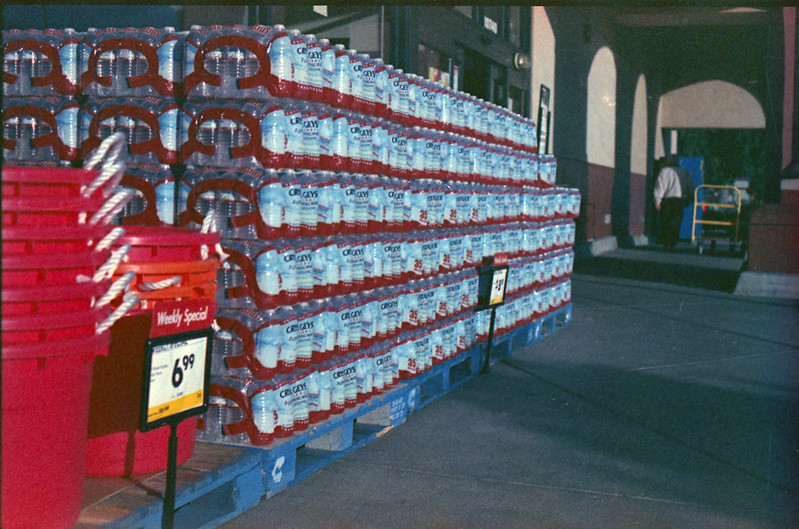Almost a year ago, I posted "The Last of the Dupe" as I shot, developed and scanned the last roll of my beloved Ektachrome Slide Duplicating Film. What is so lovable? I suppose it is really subjective, but I just like the way the grain and colors combine. Note: I always cross-process this film in Unicolor C-41 and scan. I do the normal things for scanning film like make sure my stupid scanner (Epson V600) isn't cutting off half of the histogram. But I don't do anything really in the "color correction" realm. So recently, I was looking around the interwebz for some more. I do this periodically, but not usually with any success. Either it is just a single roll, or it is so over-priced, I won't buy it, or both. So when I came across two 100' rolls of Ektachrome, I stopped for a closer look. The were unopened, expired in '80 and '81. One roll was regular Ektachrome 64D and the other was SLIDE DUPE!! I got very excited until I saw the price. $120 plus s/h put this expired film at ~$0.66/foot. That is about 3x what I usually set my limit at for expired film especially with no guarantee, returns, etc. So I put a watch on it to see if it would sell, just out of curiosity and I also wanted to keep track of it if it didn't sell. The film didn't sell and was subsequently relisted as an auction starting at $0.99. Now that's a starting point I can get on board with! I would usually wait until the end and try to snipe the auction, but I really didn't think this was going to stay reasonably priced. So I threw a bid on it for $30 ($0.15/foot). Who knows how, but I won the auction with a winning bid of $10.50! Including s/h the film came out to be $0.12/foot!! If the film was any good, I got a really great bargain. If the film was trashed, I was out $23, which I could live with.
So here are the results of the first few shots. Taken with my trusty Pentax K1000 equipped with the SMC 50/1.7 lens. I set the meter at iso 32 and then I took one shot on center, the next shot was one stop slower (iso 16) and the next shot was one stop faster (iso 64). The roll was developed at regular temps and times for Unicolor C-41.



I did not adjust any levels or anything to make one shot look better than the others. I just set the histogram limits for black and white. At first glance, the iso 16 shots look best. But if you look at the last shot of the rose bud, you will see that the highlights blew. That is the only one taken in full sun, midday. So maybe 16 would be a good number if you are shooting this in diffuse or dim light (golden hour), but I think the iso 32 and 64 shots are more usable as far as the highlights and shadows go.
Here are the 32 and 64 shots from the middle set. I have adjusted these individually in order to compare on level ground.


It is easy to see that the shot at iso 64 has more grain and is a little cooler in tone. That is good to keep in mind in case that is a look I want. I might try another short roll like this and shoot at 64 and 125 and then push the development one stop. That might bring the warmth back to the colors and help with the grain a bit. If I decide to do that, I'll link it here. Until then I am just going to enjoy shooting my favorite film again.
No comments:
Post a Comment